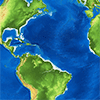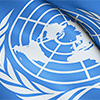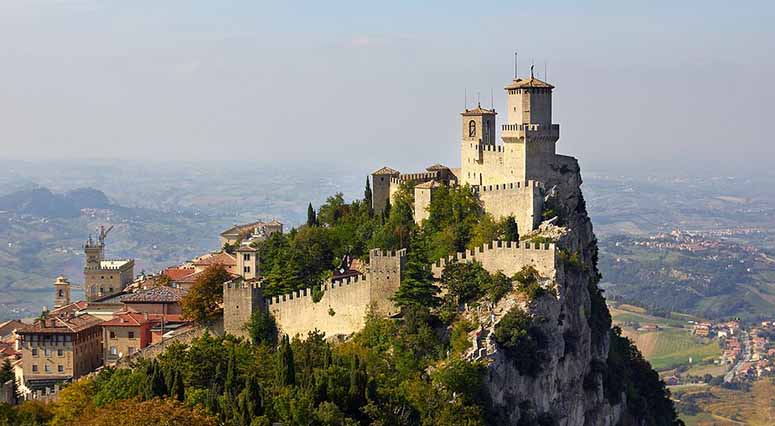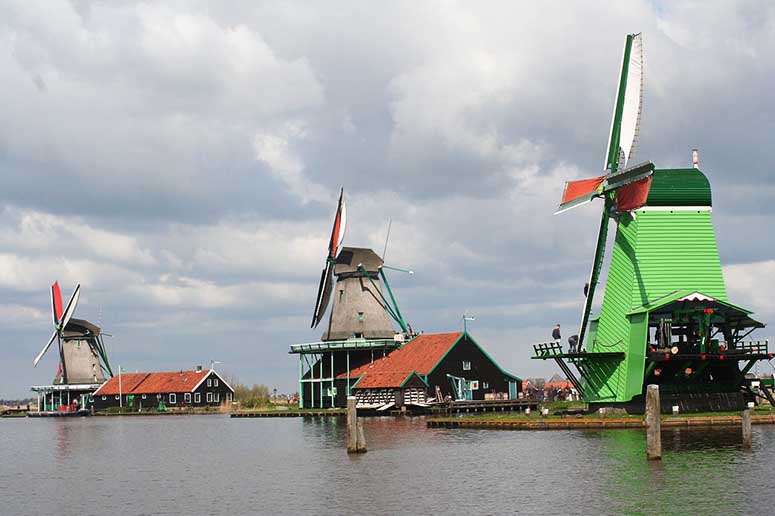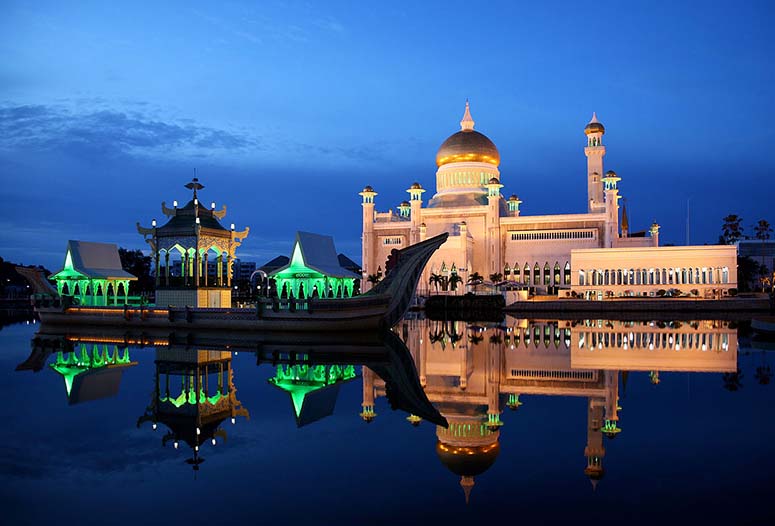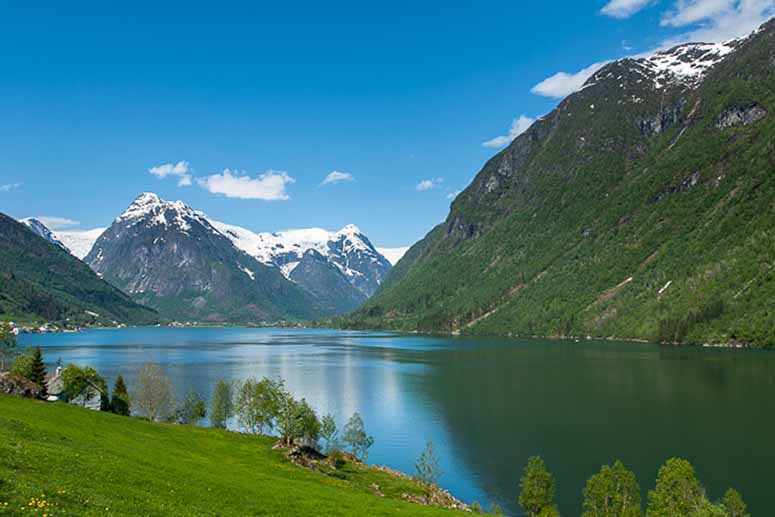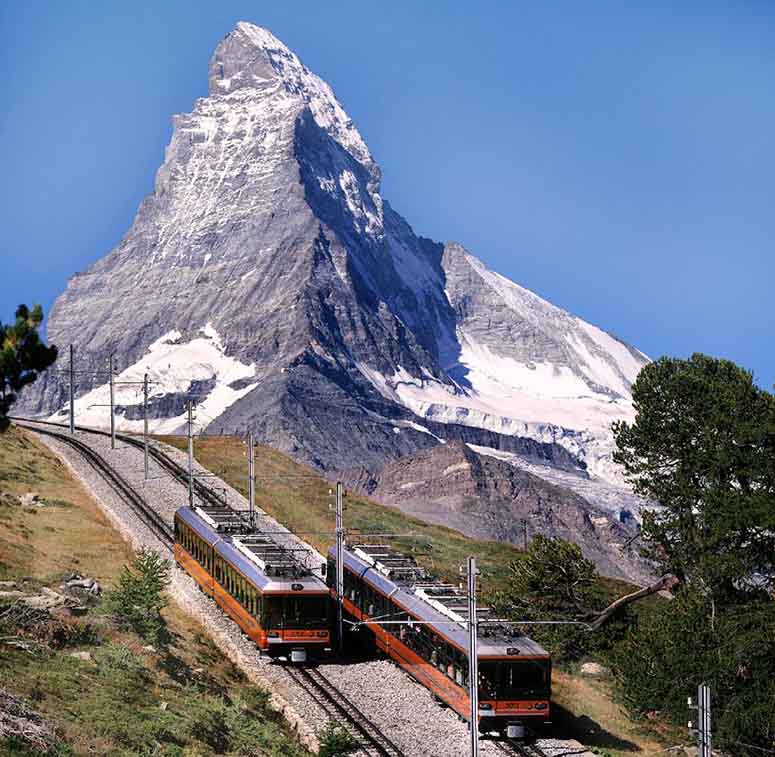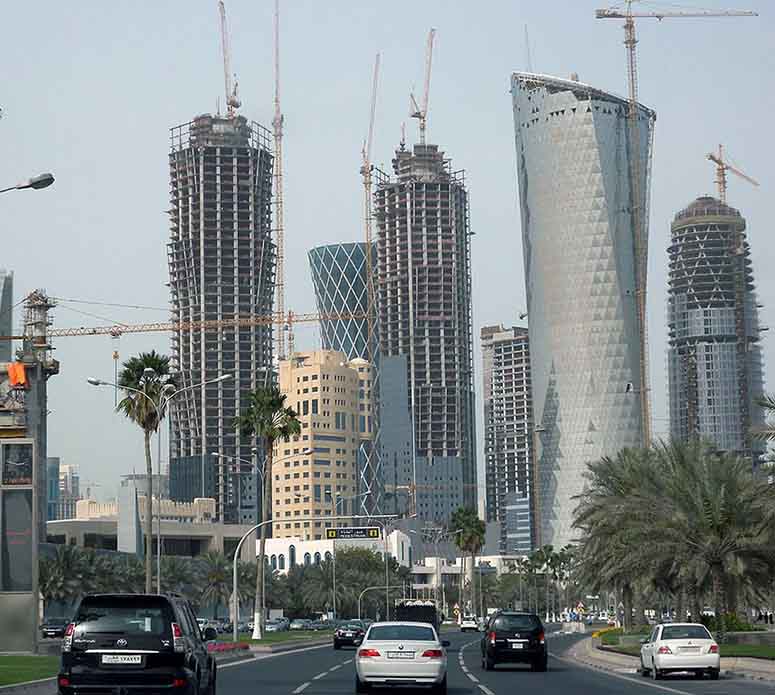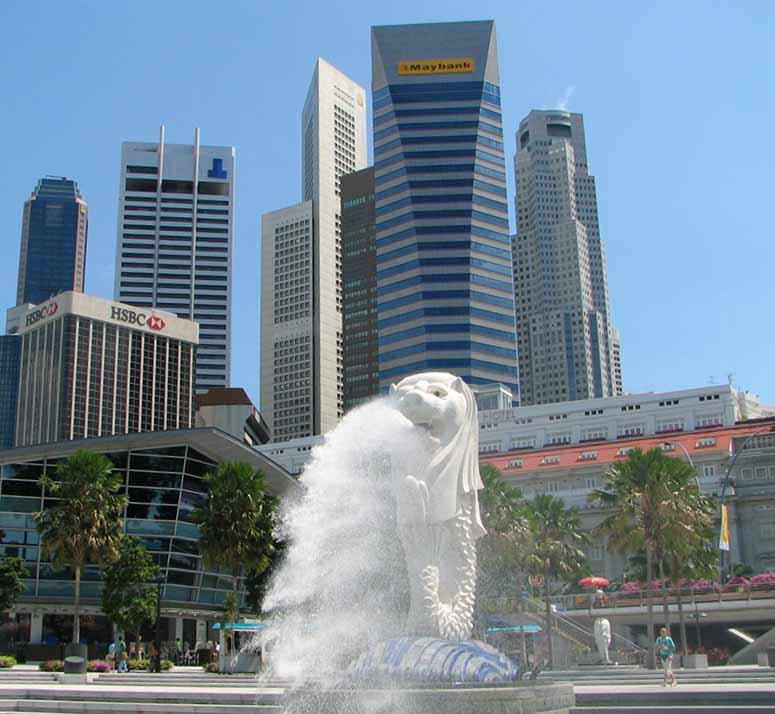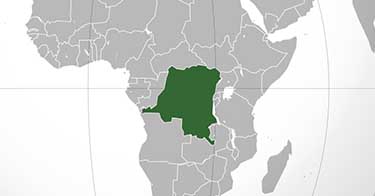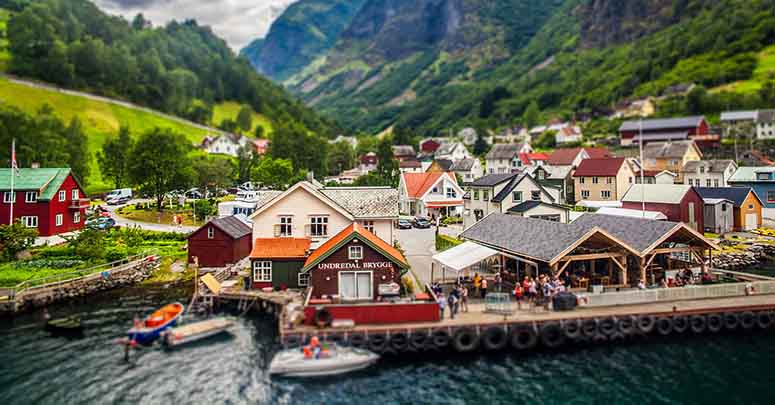People
Richest Countries In The World - Top 15
Updated Nov 21, 2020
These are the richest countries in the world by GDP (PPP) per capita according to the International Monetary Fund.
Rankings of the richest countries in the world are usually based on the countries' GDP per capita. GDP stands for gross domestic product (GDP), which is the value of all final goods and services produced in a country during one year. When dividing a country's GDP with its population, you get GDP per capita, which is an average measure of how much of the country's GDP each inhabitant accounts for. For example, China is the second richest country in the world based on its GDP (in US-dollars)[2] but when dividing its GDP with its massive population one can see that their GDP per capita is fairly low.
GDP is basically just a measure of how much money there is in a country, but there is also a clear connection between GDP per capita and the population's wellbeing and standard of living. But even though a list of the richest countries in the world is also a list of countries with overall high standard of living, one has to remember that the wealth can be more or less unevenly distributed among its inhabitants.
Here is a list of the richest countries in the world, ranked by the latest estimates (as of October 2020) by the International Monetary Fund (IMF) of the countries' GDP (PPP) per capita.[1] PPP stands for purchasing power parity and takes the price level in each country into account. PPP is applied to make the comparison between different nations' GDP per capita more fair. The unit used is a hypothetical currency called international dollar (Int. $).
Rankings of the richest countries in the world are usually based on the countries' GDP per capita. GDP stands for gross domestic product (GDP), which is the value of all final goods and services produced in a country during one year. When dividing a country's GDP with its population, you get GDP per capita, which is an average measure of how much of the country's GDP each inhabitant accounts for. For example, China is the second richest country in the world based on its GDP (in US-dollars)[2] but when dividing its GDP with its massive population one can see that their GDP per capita is fairly low.
GDP is basically just a measure of how much money there is in a country, but there is also a clear connection between GDP per capita and the population's wellbeing and standard of living. But even though a list of the richest countries in the world is also a list of countries with overall high standard of living, one has to remember that the wealth can be more or less unevenly distributed among its inhabitants.
Here is a list of the richest countries in the world, ranked by the latest estimates (as of October 2020) by the International Monetary Fund (IMF) of the countries' GDP (PPP) per capita.[1] PPP stands for purchasing power parity and takes the price level in each country into account. PPP is applied to make the comparison between different nations' GDP per capita more fair. The unit used is a hypothetical currency called international dollar (Int. $).
Advertisement:
15. Germany
GDP (PPP) per capita: 53,570 Int. $ [1]
Germany is a strong industrial country that, thanks to its large exports, has the largest GDP in Europe [2]. The country exports cars, machinery, electronics, chemical goods, pharmaceuticals, metals and much more. Germany also has some natural resources such as forests, lignite, potassium carbonate and other salts. The photo shows Volkswagenwerk, Volkswagen's main factory in Wolfsburg.
Germany is a strong industrial country that, thanks to its large exports, has the largest GDP in Europe [2]. The country exports cars, machinery, electronics, chemical goods, pharmaceuticals, metals and much more. Germany also has some natural resources such as forests, lignite, potassium carbonate and other salts. The photo shows Volkswagenwerk, Volkswagen's main factory in Wolfsburg.
14. Iceland
GDP (PPP) per capita: 54,480 Int. $ [1]
Iceland took a hard blow when the financial crisis began to spread across the world in 2008. Now the country seems to be recovering. Iceland's biggest sources of income are exports of fish and aluminum (the construction of large aluminum smelters is made possible thanks to Iceland's abundant supply of geothermal energy and hydropower). Tourism also provides an important income.
Iceland took a hard blow when the financial crisis began to spread across the world in 2008. Now the country seems to be recovering. Iceland's biggest sources of income are exports of fish and aluminum (the construction of large aluminum smelters is made possible thanks to Iceland's abundant supply of geothermal energy and hydropower). Tourism also provides an important income.
Advertisement:
13. Austria
GDP (PPP) per capita: 55,410 Int. $ [1]
For scenic Austria, tourism is a significant source of income. But far more important are the country's exports of goods and services. Thanks to a wealth of mineral resources and a strong industry, Austria can export iron, steel, aluminum, construction services, industrial machinery, vehicles, chemicals and much more. Austria also benefits from its geographical location and sells financial and consulting services to Eastern European countries. The photo shows Hallstatt.
For scenic Austria, tourism is a significant source of income. But far more important are the country's exports of goods and services. Thanks to a wealth of mineral resources and a strong industry, Austria can export iron, steel, aluminum, construction services, industrial machinery, vehicles, chemicals and much more. Austria also benefits from its geographical location and sells financial and consulting services to Eastern European countries. The photo shows Hallstatt.
12. San Marino
GDP (PPP) per capita: 56,690 Int. $ [1]
San Marino is a microstate completely sorrounded by Italy. The country's few inhabitants live well, partly thanks to income from tourism. Another important source of income is banking business. The country exports textiles, electronics, ceramics, cement and wine. The photo shows the Guaita fortress, situated on a peak overlooking San Marino's capital San Marino.
San Marino is a microstate completely sorrounded by Italy. The country's few inhabitants live well, partly thanks to income from tourism. Another important source of income is banking business. The country exports textiles, electronics, ceramics, cement and wine. The photo shows the Guaita fortress, situated on a peak overlooking San Marino's capital San Marino.
11. Netherlands
GDP (PPP) per capita: 57,100 Int. $ [1]
Even though the Netherlands was industrialized relatively late, the country has had a successful economy since the 17th century. The fact that the Dutch economy is so prosperous today is largely because of income from industries such as oil refining, food processing, machine manufacturing and chemical industry. The country also has an effective agriculture that produces a large surplus that can be exported. The photo shows three of the many windmills in the city of Zaandam.
Even though the Netherlands was industrialized relatively late, the country has had a successful economy since the 17th century. The fact that the Dutch economy is so prosperous today is largely because of income from industries such as oil refining, food processing, machine manufacturing and chemical industry. The country also has an effective agriculture that produces a large surplus that can be exported. The photo shows three of the many windmills in the city of Zaandam.
10. Denmark
GDP (PPP) per capita: 57,780 Int. $ [1]
Denmark is a cultivated country that exports grain, meat and fur. The nation also has an important manufacturing industry and exports pharmaceuticals, chemicals, machinery, electronics, wind turbines and transport equipment, as well as designer goods such as ceramics, clothing, toys and furniture. Denmark is also an experienced maritime nation and receives large revenues from fishing and sea freight. The photo shows Nyhavn in Copenhagen.
Denmark is a cultivated country that exports grain, meat and fur. The nation also has an important manufacturing industry and exports pharmaceuticals, chemicals, machinery, electronics, wind turbines and transport equipment, as well as designer goods such as ceramics, clothing, toys and furniture. Denmark is also an experienced maritime nation and receives large revenues from fishing and sea freight. The photo shows Nyhavn in Copenhagen.
9. United Arab Emirates
GDP (PPP) per capita: 58,470 Int. $ [1]
The United Arab Emirates is a federation of seven emirates – territories each ruled by an Islamic leader called emir. The most known emirates are probably Abu Dhabi and Dubai. The United Arab Emirates' income comes primarily from oil, and surplus from the oil industry pays for the federation's healthcare, schools and military. As a result, the inhabitants don't have to pay income tax. The photo shows skyscrapers rising from the sand during the construction boom in Dubai 2008.
The United Arab Emirates is a federation of seven emirates – territories each ruled by an Islamic leader called emir. The most known emirates are probably Abu Dhabi and Dubai. The United Arab Emirates' income comes primarily from oil, and surplus from the oil industry pays for the federation's healthcare, schools and military. As a result, the inhabitants don't have to pay income tax. The photo shows skyscrapers rising from the sand during the construction boom in Dubai 2008.
8. Brunei
GDP (PPP) per capita: 61,820 Int. $ [1]
Brunei is another country for those who hate paying taxes. There are neither income nor sales taxes in this small sultanate, but the government still offers free schools and healthcare. Brunei's wealth comes from large deposits of oil and natural gas. Investments from abroad also bring in the bucks. The photo shows the Sultan Omar Ali Saifuddin Mosque in Brunei's capital Bandar Seri Begawan.
Brunei is another country for those who hate paying taxes. There are neither income nor sales taxes in this small sultanate, but the government still offers free schools and healthcare. Brunei's wealth comes from large deposits of oil and natural gas. Investments from abroad also bring in the bucks. The photo shows the Sultan Omar Ali Saifuddin Mosque in Brunei's capital Bandar Seri Begawan.
7. United States
GDP (PPP) per capita: 63,050 Int. $ [1]
The United States is the richest country in the world by GDP [2] , and when dividing the GDP with the population, the US takes seventh place on this list. The United States were badly hit by the recent financial crisis and suffer from quite large income gaps. The US economy is primarily driven by the nation's large service sector and abundant natural resources. The country produces, among other things, sulfur, phosphates and liquid natural gas. The photo shows Times Square in New York.
The United States is the richest country in the world by GDP [2] , and when dividing the GDP with the population, the US takes seventh place on this list. The United States were badly hit by the recent financial crisis and suffer from quite large income gaps. The US economy is primarily driven by the nation's large service sector and abundant natural resources. The country produces, among other things, sulfur, phosphates and liquid natural gas. The photo shows Times Square in New York.
6. Norway
GDP (PPP) per capita: 64,860 Int. $ [1]
Norway always scores high on lists of countries where it's best to live, and it's not hard to understand why. Besides having rich resources of oil, natural gas, forests and hydro power, Norway offers its wealthy inhabitants a magnificent and unique scenery. However, oil depletion is a big future threat to Norway's economy. The photo shows the beautiful Fjærlandsfjord, a fjord arm that branches of the well-visited Sognefjord.
Norway always scores high on lists of countries where it's best to live, and it's not hard to understand why. Besides having rich resources of oil, natural gas, forests and hydro power, Norway offers its wealthy inhabitants a magnificent and unique scenery. However, oil depletion is a big future threat to Norway's economy. The photo shows the beautiful Fjærlandsfjord, a fjord arm that branches of the well-visited Sognefjord.
5. Switzerland
GDP (PPP) per capita: 68,340 Int. $ [1]
The beautiful alpine country of Switzerland is known for its banks – financial services make up a large portion of the country's GDP. Other key industries include the country's manufacturing industry, pharmaceutical industry and tourism. Switzerland exports goods like chemicals, machinery, electronics and watches. The photo shows the Gornergrat railway in front of Matterhorn.
The beautiful alpine country of Switzerland is known for its banks – financial services make up a large portion of the country's GDP. Other key industries include the country's manufacturing industry, pharmaceutical industry and tourism. Switzerland exports goods like chemicals, machinery, electronics and watches. The photo shows the Gornergrat railway in front of Matterhorn.
4. Ireland
GDP (PPP) per capita: 89,380 Int. $ [1]
Ireland's economy has grown extensively over the past couple of decades, and the country now has one of the world's highest GDP (PPP) per capita. However, the economy is quite unbalanced and a large portion of Ireland's income belongs to large companies based outside the country. This probably makes Ireland's GDP (PPP) per capita a bit misleading.
Ireland's economy has grown extensively over the past couple of decades, and the country now has one of the world's highest GDP (PPP) per capita. However, the economy is quite unbalanced and a large portion of Ireland's income belongs to large companies based outside the country. This probably makes Ireland's GDP (PPP) per capita a bit misleading.
3. Qatar
GDP (PPP) per capita: 91,900 Int. $ [1]
The third richest country in the world has, like many of the wealthiest countries, including its neighbors United Arab Emirates and Kuwait, made its fortune on oil. Qatar has had a rapidly growing economy, much due to the fact that oil prices have risen so much in the 2000s. Except oil, Qatar also exports natural gas, but the country is trying to develop more technology-based companies, to avoid a complete dependency on fossil fuels. There is no income tax in Qatar. The photo shows the capital Doha.
The third richest country in the world has, like many of the wealthiest countries, including its neighbors United Arab Emirates and Kuwait, made its fortune on oil. Qatar has had a rapidly growing economy, much due to the fact that oil prices have risen so much in the 2000s. Except oil, Qatar also exports natural gas, but the country is trying to develop more technology-based companies, to avoid a complete dependency on fossil fuels. There is no income tax in Qatar. The photo shows the capital Doha.
2. Singapore
GDP (PPP) per capita: 95,600 Int. $ [1]
The small republic of Singapore is one of the most densely populated countries in the world, which is not so strange considering the capital Singapore makes up almost the entire country area. The largest part of Singapore's GDP comes from the manufacturing industry, and the country specializes in importing products, refining them and then exporting them. The photo shows a famous statue in Singapore, and also the country's mascot – Merlion, a mythical creature with the head of a lion and the body of a fish.
The small republic of Singapore is one of the most densely populated countries in the world, which is not so strange considering the capital Singapore makes up almost the entire country area. The largest part of Singapore's GDP comes from the manufacturing industry, and the country specializes in importing products, refining them and then exporting them. The photo shows a famous statue in Singapore, and also the country's mascot – Merlion, a mythical creature with the head of a lion and the body of a fish.
1. Luxembourg
GDP (PPP) per capita: 112,880 Int. $ [1]
The richest country in the world, Luxembourg, is often mentioned together with the other microstates in Europe. But Luxembourg is actually considerably larger and more populous than, for example, Monaco, Andorra and Liechtenstein. Luxembourg has low unemployment and a steadily growing economy, mostly thanks to the country's steel-, chemical-, rubber- and banking industry. Luxembourg's capital, which is also called Luxembourg, is home to many of EU's main buildings (photo).
The microstates Liechtenstein and Monaco should place high on the list of the world's richest countries, but since they are not members of the International Monetary Fund, there's no comparative data on the countries' GDP per capita.
Both Macau (58 930 Int. $ [1]) and Hong Kong (58 170 Int. $ [1]) qualify for the list, but are defined as special administrative regions and not as countries.
Taiwan would take 15th place (54 020 Int. $ [1]) if it was recognized as a sovereign state.
The richest country in the world, Luxembourg, is often mentioned together with the other microstates in Europe. But Luxembourg is actually considerably larger and more populous than, for example, Monaco, Andorra and Liechtenstein. Luxembourg has low unemployment and a steadily growing economy, mostly thanks to the country's steel-, chemical-, rubber- and banking industry. Luxembourg's capital, which is also called Luxembourg, is home to many of EU's main buildings (photo).
The microstates Liechtenstein and Monaco should place high on the list of the world's richest countries, but since they are not members of the International Monetary Fund, there's no comparative data on the countries' GDP per capita.
Both Macau (58 930 Int. $ [1]) and Hong Kong (58 170 Int. $ [1]) qualify for the list, but are defined as special administrative regions and not as countries.
Taiwan would take 15th place (54 020 Int. $ [1]) if it was recognized as a sovereign state.
References
[1]
[2]
"GDP, current prices, Billions of U.S. dollars / World Economic Outlook (October 2020)". IMF. Retrieved Nov 21, 2020.
Related
Latest





